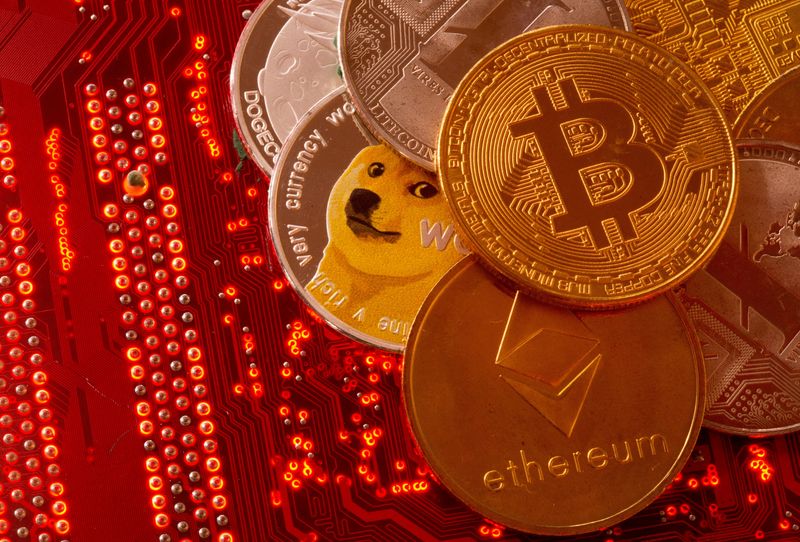By Niket Nishant and Manya Saini
(Reuters) – For U.S. online trading companies an often-overlooked financial metric could act as a bulwark against softening demand in the third quarter, according to analysts.
The U.S. Federal Reserve’s rate hikes are expected to drive up interest income for commission-free brokerage Robinhood Markets Inc and cryptocurrency exchange Coinbase Global Inc.
“While rates were low and crypto markets were hot, investors paid little attention to (interest income), but it is becoming an increasingly important driver for Coinbase’s revenue stream,” Barclays analysts wrote.
“The impact of higher rates will flow through earnings at a rate slightly better than previously forecast,” J.P. Morgan analysts said of Robinhood.
THE CONTEXT
Central banks around the world have been scrambling to cool the economy in an attempt to tame inflation, which despite several rate hikes this year, is still raging at levels not seen in four decades.
That has led to a stunning reversal in fortunes for lenders squeezed by near-zero interest rates last year.
Robinhood allows eligible customers to borrow money to purchase securities and charges an interest on the debt.
Analysts say the feature, called “margin investing”, can also be used to drive greater subscriptions to its premium Robinhood Gold as members can borrow money much more cheaply than the standard rate.
“We see Robinhood lifting rates to levels not that different from peers,” J.P. Morgan added.
On the other hand, Coinbase earns interest on reserves backing USD Coin (USDC), the second-biggest stablecoin by market capitalization, which it issues jointly with crypto firm Circle.
It also earns interest on bitcoin-backed loans it provides to customers.
Analysts expect net interest revenue at Robinhood to surge 65%, while Coinbase’s subscription and services revenue, which includes interest income, is estimated to grow 28%, according to IBES data at Refinitiv.
The companies are, however, also expected to report a decline in overall third-quarter revenue, as inflation-battered retail traders sought refuge in cash instead of betting on risky assets.
Robinhood is due to report third-quarter results after the bell on Wednesday, while Coinbase is set to follow on Thursday.
(Reporting by Manya Saini and Niket Nishant in Bengaluru; Editing by Shounak Dasgupta)


















